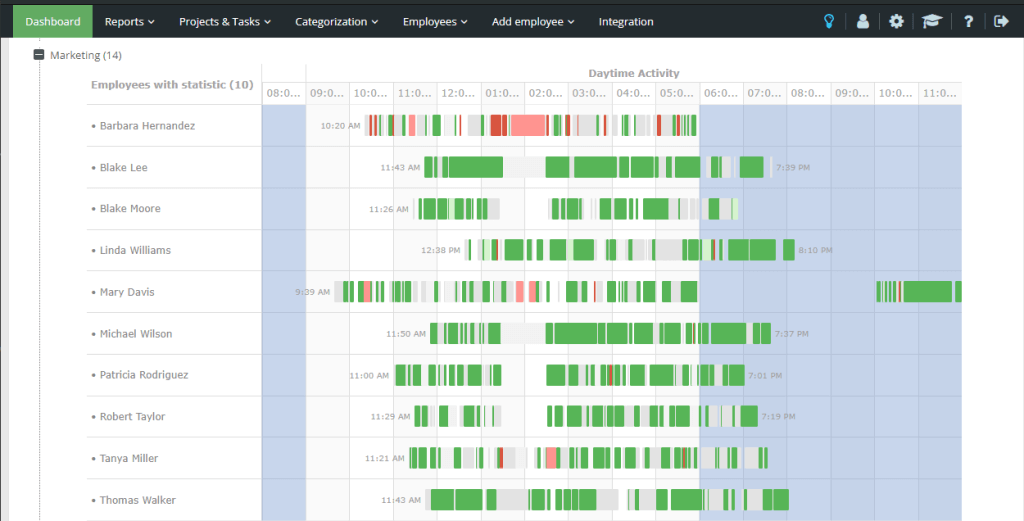What happens between tasks and why it matters
Every completed task has an invisible twin: the time spent transitioning to it. These “invisible transitions” include waiting for approvals, seeking clarifications, and navigating rework loops that never appear in project timelines. While Jira shows a task took 8 hours, it doesn't capture the 2 hours spent waiting for feedback or the 30 minutes finding the right Slack thread.
According to McKinsey research, knowledge workers spend 20-25% of their time searching for information and coordinating with colleagues. This means in a 40-hour work week, 8-10 hours vanish into organizational friction that project management tools simply don't track.
The problem compounds when these micro-delays create cascading effects. One blocked developer means three others switch context, each losing momentum and focus. These transitions become the hidden tax on productivity that silently erodes team capacity.
How work hours vanish without anyone noticing
Project boards create an illusion of visibility. Tasks move from “To Do” to “In Progress” to “Done,” but the reality between these states remains hidden. A developer might spend 45 minutes re-reading technical requirements, 20 minutes waiting for database access, and another 15 minutes clarifying edge cases before writing a single line of code.
Research by Harvard Business Review found that employees lose an average of 21 minutes per interruption to fully refocus. In teams juggling multiple priorities, these interruptions compound into hours of lost productivity daily.
The cruel irony is that busy teams often lose the most time between tasks. The more projects in flight, the more context switching occurs, and the larger these invisible gaps become. Teams appear productive on paper while struggling to meet deadlines in reality.
Why these invisible losses cost more than missed deadlines
When specialists sit idle waiting for dependencies, companies pay their full salary for zero output. A senior developer earning $120,000 annually costs $58 per hour. If hidden delays consume 15% of their time, that's $18,000 in wasted salary yearly per person.
Opportunity costs multiply the damage. Blocked specialists often switch to lower-priority work, creating bottlenecks elsewhere. The ripple effect means delayed features, frustrated customers, and missed market opportunities that extend far beyond the immediate project.
Gallup research shows that disengaged employees, often created by these frustrating inefficiencies, cost organizations 18% of their annual salary in lost productivity. The financial impact of time leaks extends beyond immediate labor costs into retention, morale, and competitive positioning.
How time tracking makes these gaps visible
Time tracking reveals the work between the work that project tools miss. While Jira tracks task completion, time tracking captures the full spectrum of effort: research, coordination, waiting, and problem-solving that happens outside formal task boundaries.

A 50-person tech team implementing comprehensive time tracking discovered they were losing 18% of capacity to invisible transitions. The data revealed patterns invisible to traditional project management: certain approval processes consistently created 2-hour delays, specific integrations required 40% more research time than estimated, and unclear requirements generated expensive rework cycles.
Time tracking transforms invisible problems into actionable data. Teams can identify which processes create the most friction, which dependencies cause the longest delays, and where communication gaps cost the most time. A 50-person tech team implementing comprehensive time tracking discovered they were losing 18% of capacity to invisible transitions. The data revealed patterns invisible to traditional project management:
- Approval bottlenecks that consistently added 2+ hours to tasks
- Unclear requirements that triggered expensive rework cycles
- Context switching between projects that fragmented focus
- Dependency chains where one delay cascaded through multiple team members
- Communication gaps that forced repeated clarification rounds
That's why tracking matters beyond project boards – it reveals the operational friction hiding in plain sight.
What to look for in a time tracking tool that addresses between-task losses
Effective time tracking for transition visibility requires seamless integration with existing project tools like Jira and Asana. The best solutions capture time automatically without disrupting workflow, providing granular visibility into both task work and the coordination activities that surround it.
Look for role-based access controls that give managers aggregate insights without creating surveillance anxiety among team members. Simple dashboards should highlight trends and patterns rather than individual monitoring, focusing on process improvement rather than performance policing.
Privacy-conscious approaches work best for knowledge teams. Avoid tools with intrusive screenshots or keystroke monitoring that create distrust. Instead, prioritize solutions that respect autonomy while providing transparency into time allocation patterns. Tools like Yaware.TimeTracker integrate naturally with project management platforms to measure what traditional tools miss, revealing the full picture of where time actually goes.
The hidden cost that adds up faster than you think
These invisible time leaks compound daily across every team member, creating organizational drag that's both expensive and exhausting. The 15-25% of work hours lost between tasks represents thousands of dollars monthly for mid-sized teams, money that simply evaporates without trace or accountability.
Ready to see how many hours you're losing between tasks? Test Yaware TimeTracker free for 14 days – no credit card, no surprises. Discover what your project management tools aren't showing you.

